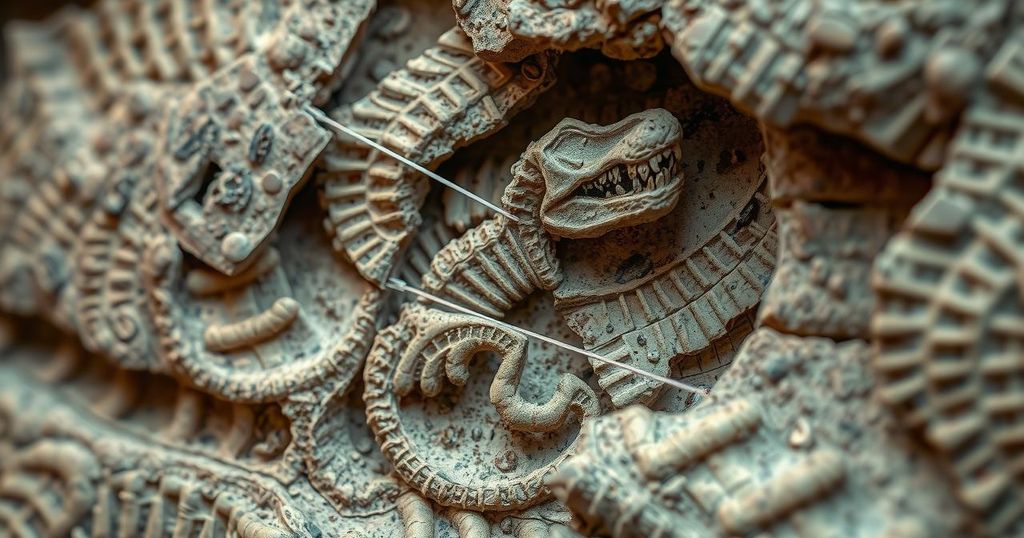There are significant doubts about a fossil purportedly representing a mosasaur species from 72 to 66 million years ago. Researchers have pointed out inconsistencies in its structure that may indicate it is not genuine. Calls for further investigation include the use of CT scans to validate its authenticity, as access to the fossil has been problematic. This scrutiny is crucial to uphold scientific integrity.
Concerns have emerged regarding the authenticity of a fossil used to identify a mosasaur species believed to have lived approximately 72 to 66 million years ago. This fossil, found in a phosphate mine in Morocco, served as the foundation for categorizing Xenodens calminechari, a marine predator characterized by its distinctive saw-like teeth, but doubts have been raised by researchers due to inconsistencies in its structure and provenance.
A study published in The Anatomical Record highlights anomalies in the fossil’s jawbone and teeth, which have led to skepticism about its authenticity. Notably, two teeth were discovered sharing a single tooth socket, a biological feature inconsistent with mosasaurs, which are known for having one tooth per socket. Dr. Michael Caldwell, a biological sciences professor at the University of Alberta, elaborated on this discrepancy, noting that the overlapping material around the teeth could indicate possible tampering with the fossil.
The fossil originated from a region notorious for containing forged elements, raising further questions about its legitimacy. To address these concerns, researchers advocate for the use of computed tomography (CT) scans. However, access to the fossil has proven difficult since it is maintained by Nick Longrich, the lead author of the original study based at the University of Bath. Henry Sharpe, the lead author of the recent investigation, stated that withholding information about a holotype specimen is unethical, as such specimens should be available for scientific analysis.
There is a growing demand for further investigation into the fossil’s authenticity, with researchers stressing the need to validate its credibility to uphold the integrity of scientific records. Such verification is essential to maintain trust in paleontological findings and prevent misinformation in the scientific community.
The mosasaur fossil in question, foundational to the classification of Xenodens calminechari, has faced scrutiny regarding its authenticity since inconsistencies have been noted in its anatomical features. Fossils from regions known for forgery raise alarm about their validity, invoking a need for further analysis and verification in the field of paleontology. This case exemplifies the importance of transparent access to fossil specimens for scientific evaluation.
The ongoing debate surrounding the authenticity of the mosasaur fossil underscores the pivotal role of thorough scrutiny and transparency in paleontological research. Ensuring the credibility of such findings is crucial for the integrity of the scientific record. As researchers continue to investigate, the calls for rigorous methods of verifying fossil authenticity gain momentum, emphasizing their importance in the scientific community.
Original Source: www.gadgets360.com






